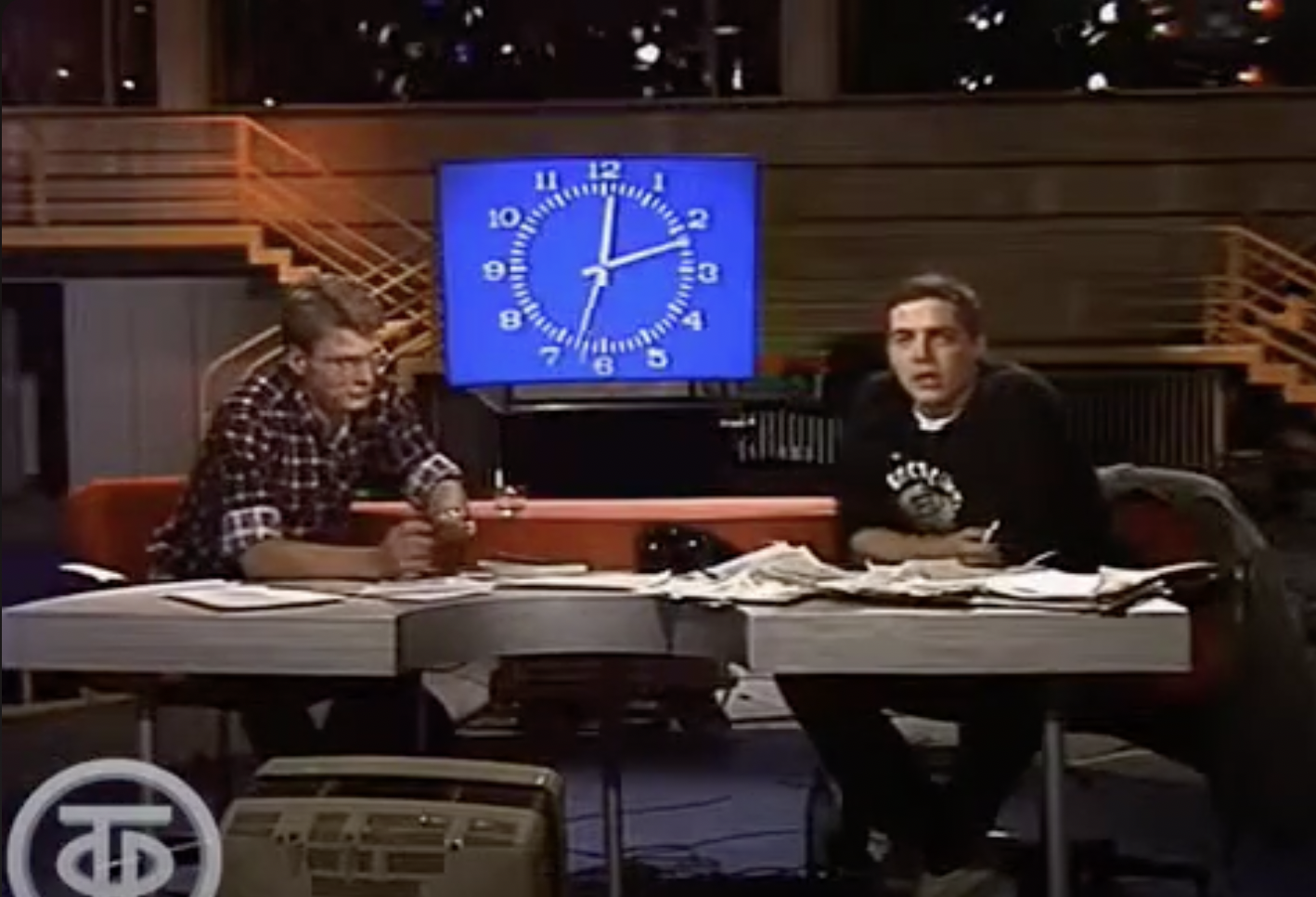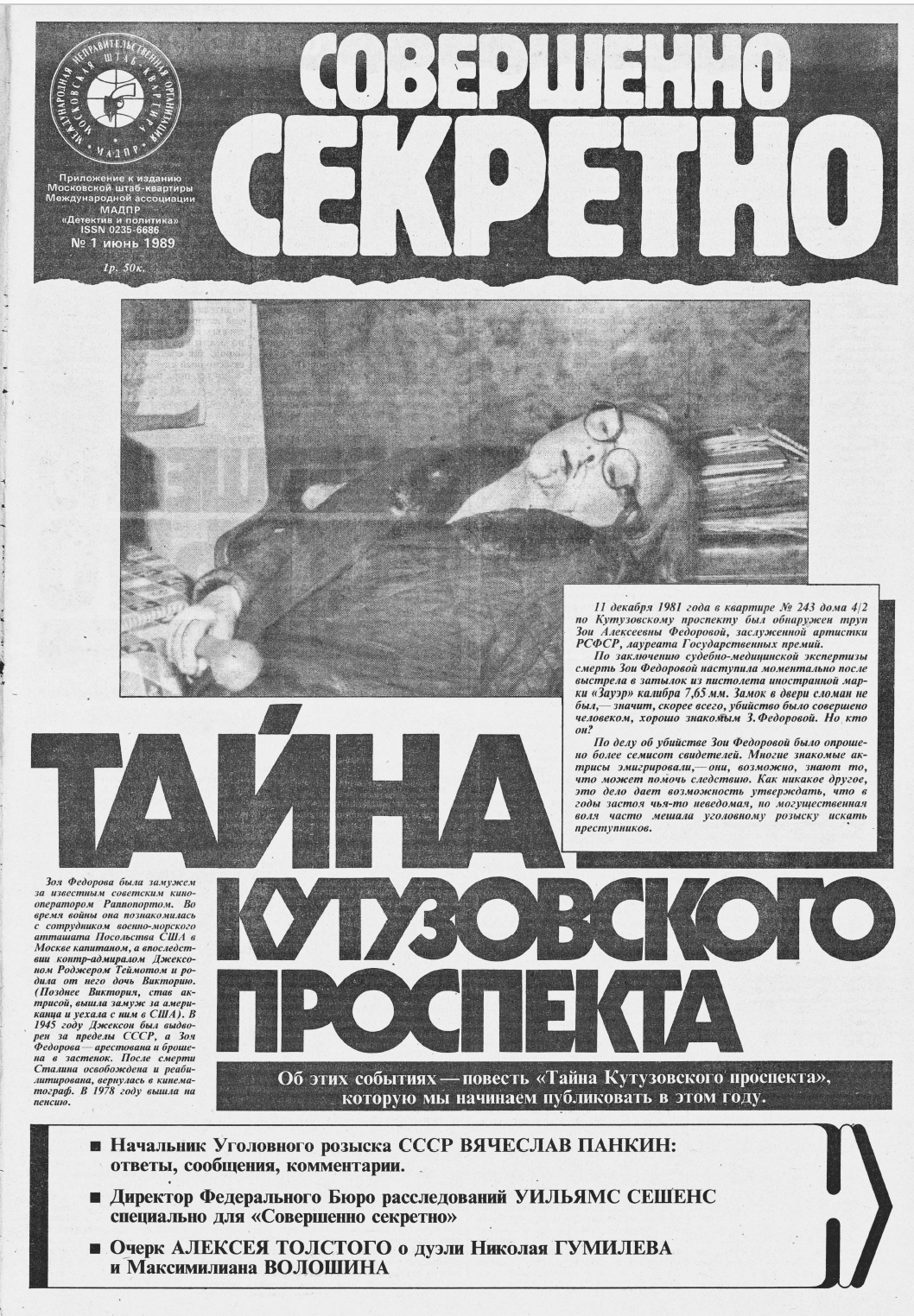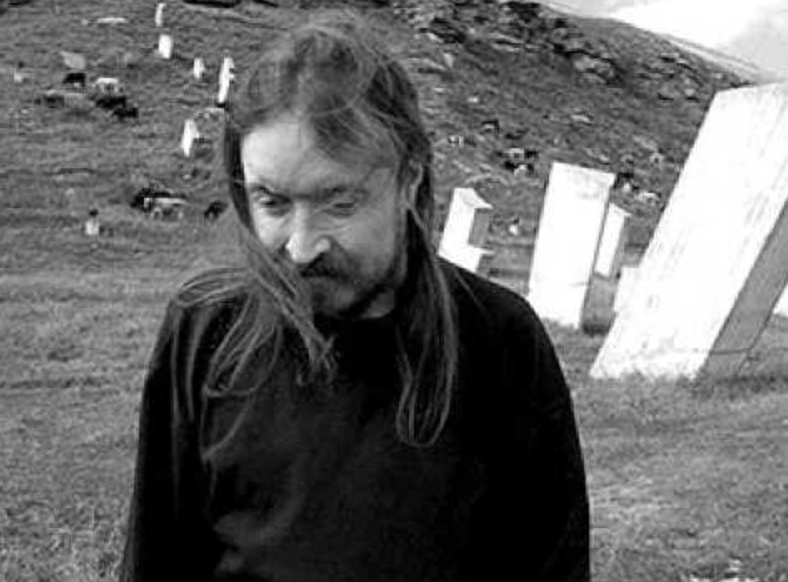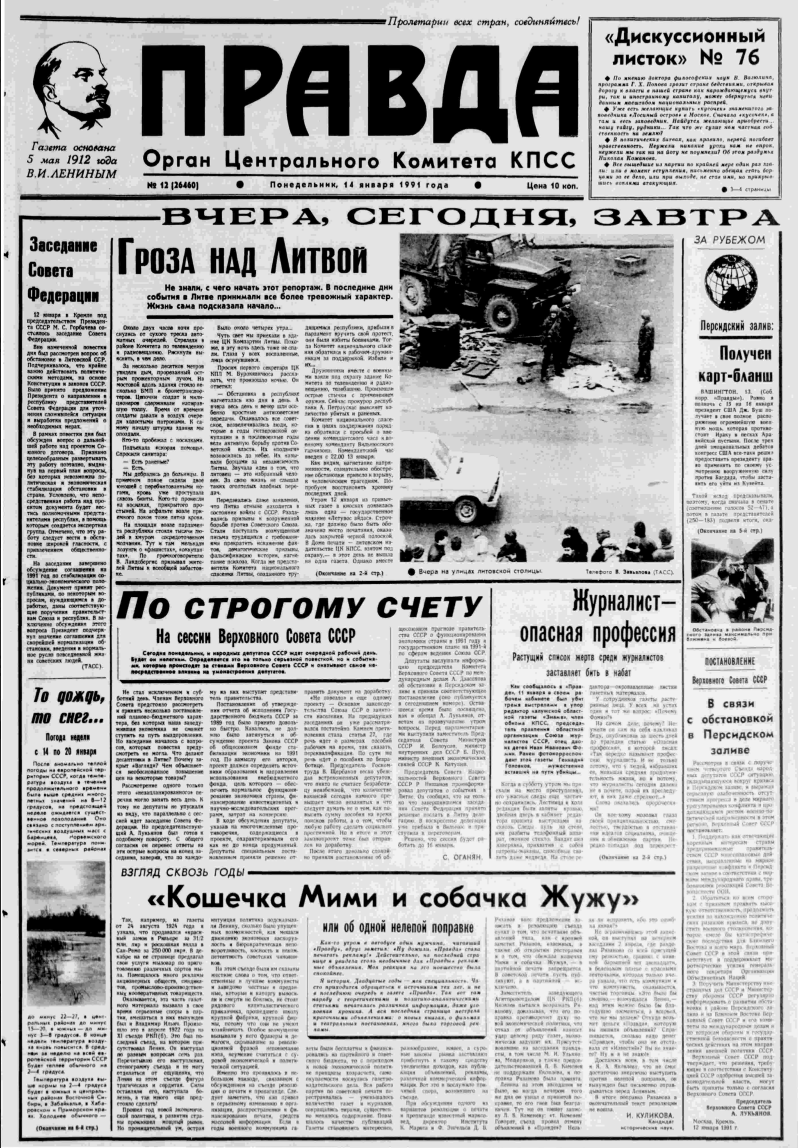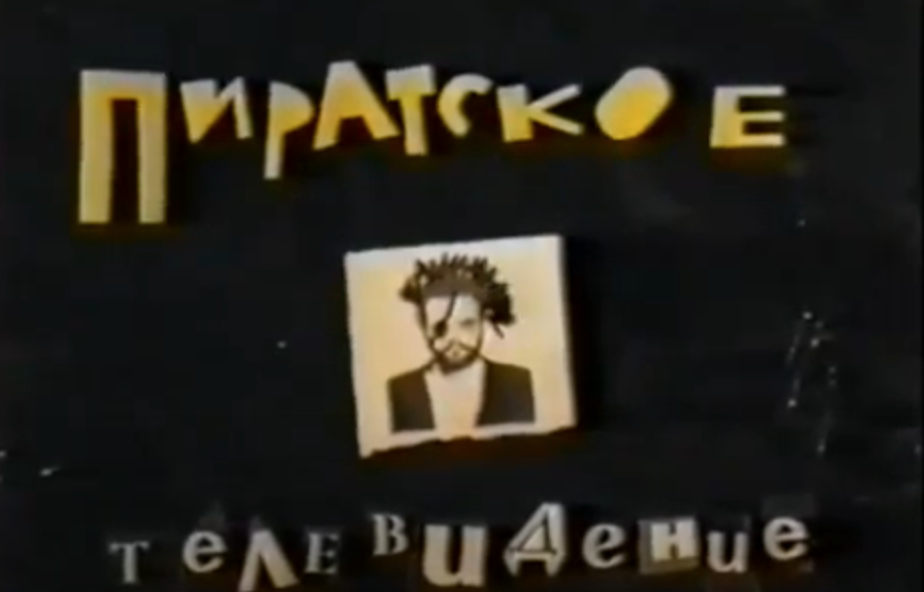The meaning of pluralism on “Vzgliad”
A conversation about pluralism between Evgeny Dodolev (1957-) and Alexander Liubimov (1962-), after an expose on chemistry lecturer and anti-glasnost activist Nina Andreeva (1938-2020).
Top Secret: Investigative Journalism and True Crime During Perestroika
Sovershenno sekretno, the first privately owned periodical in Soviet Russia since 1917, showcased a combination of transparency and sensationalism that became a distinguishing feature of journalistic writing in the post-Soviet period.
The World Made of Plastic Has Won
Yegor Letov (1964-2008) performs his song “Moia oborona” (My defense), during his “concert in the hero city Leningrad,” part of Grazhdanskaia oborona’s 1994 tour Russkii proryv (Russian breakthrough).
Tanks in Lithuania
Coverage of Soviet tanks rolling into the Lithuanian capital of Vilnius in January 1991 from Pravda, the Russian Communist Party’s press organ since 1911.
The First (Home-Made) Post-Soviet Independent TV
The Saint Petersburg “New Artists” stage a meeting of the committee “anti-state of emergency” on their “Pirate Television,” declaring their support of Yeltsin against the group of communist hardliners who led the coup d’etat against Gorbachev on August 19, 1991.
No preview available
Novikov's Shocking Coming Out (Draft)
During an interview, Timur Novikov and Sergey "Afrika" Bugaev talk about their otherwise unconfessed homosexuality in an intentionally shocking way.
View Artifact
